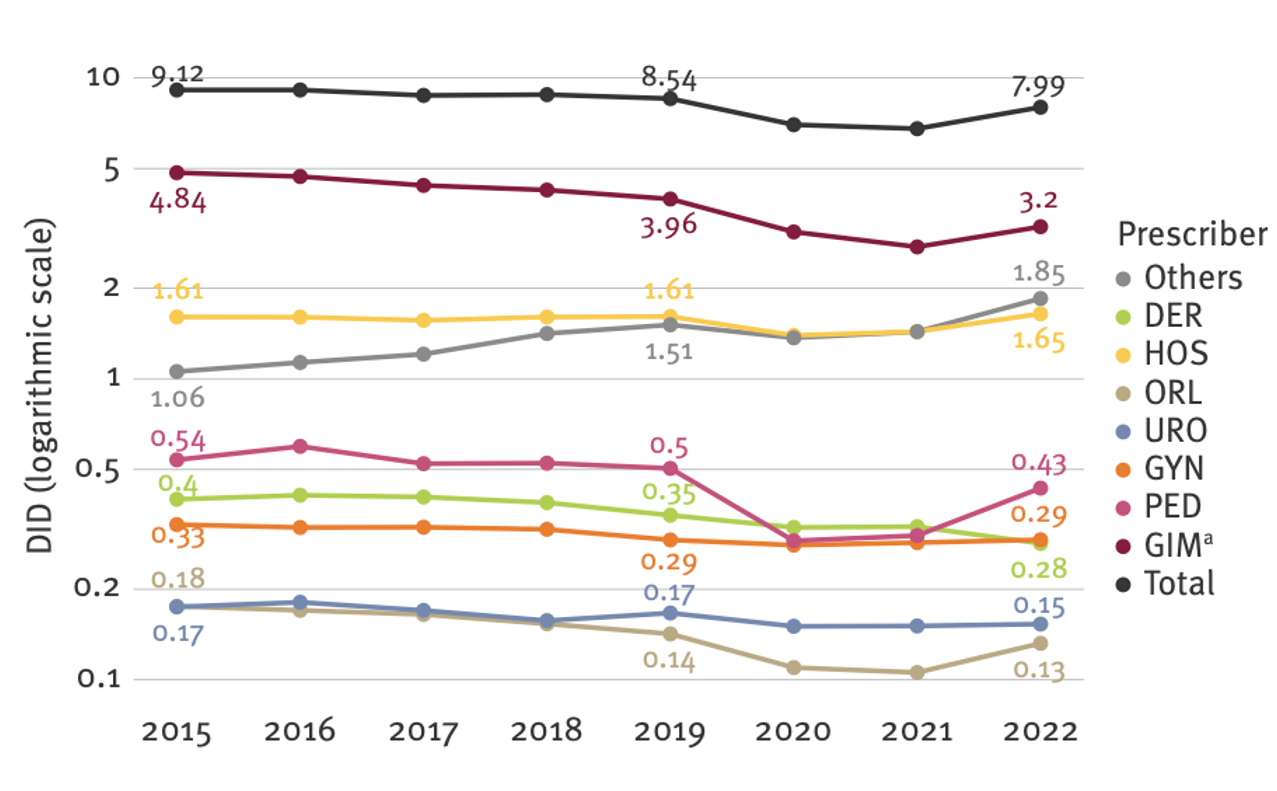Talks & Posters
A selection of talks & posters from research in public health and evolutionary biology

Conformity of Antibiotic Pack Sizes with Guideline Recommendations: An Analysis of Healthcare Claims Data
Pre-packaged antibiotic packages in Switzerland often fail to match treatment guidelines. The leftover pills from these packages can lead to improper disposal or self-medication, contributing to antibiotic resistance. A retrospective study based on claims data revealed significant overprescribing of antibiotics compared to recommended guidelines.

Contribution of the different medical specialties to the overall antimicrobial consumption in the Swiss outpatient setting: Who are the most relevant prescribers?
Antibiotic consumption is the main driver for increasing antimicrobial resistance rates. Antibiotics are predominantly prescribed in the outpatient setting, which consists of primary care, specialist care and hospital-affiliated outpatient care. In Switzerland, current surveillance takes place at aggregated levels and the contribution of the different prescribers to the overall consumption remains unknown. This study aimed to determine the contribution of the different prescribers.

Ecological vs. Social Complexity - Drivers and Consequences of Enlarged Brains in Primates
This talk explored the factors driving brain size variation in primates, challenging the prevailing Social Brain Hypothesis. The study distinguishes between selective drivers and evolutionary consequences, revealing that ecological factors, rather than social complexity, are key to brain expansion. High levels of social complexity in primates emerged as a consequence of large brains, which were enabled by favorable ecological conditions.

Seasonality and Brain Size - Cognitive Buffering is Unique to Anthropoid Primates
The expensive brain hypothesis suggests that seasonal environments impose energetic limits on brain size evolution, while the cognitive buffering hypothesis suggests that larger-brained species are better able to adapt to seasonal challenges. In a study of 41 non-primate mammals, species with higher seasonality had smaller brain sizes, confirming the patterns seen in primates, but finding weak support for cognitive buffering. Overall, energetic constraints appear to play a key role in the evolution of brain size, with cognitive buffering appearing to be more pronounced in large-brained species, especially anthropoid primates.

Cooperative breeding and hominin brain size evolution - Evidence from a comparative study in birds
In mammals, allomaternal energy inputs correlate with either large brains or increased reproductive rates. In this study we investigated the effects of allomaternal care on brain size and life history in birds. First, we showed that energetic input during breeding correlates with relative brain size. Second, we found that helpers in birds do not increase brain size or reproduction but rather increase the survival rates of parents. These findings in birds enhance our understanding of how cooperative breeding may have shaped hominin evolution.
No matching items